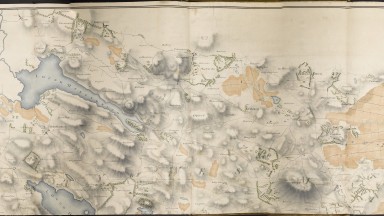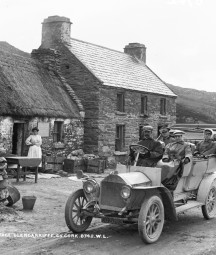Funded by the Department of Agriculture, Food and the Marine (DAFM) and the Environmental Protection Agency (EPA), RePEAT seeks to identify ways to reduce the management intensity of peatlands in Ireland. Peatlands are the world’s most important terrestrial carbon stores and sinks. Once they are drained, however, peatlands turn into carbon emitters and thus potent agents of climate change. In Ireland, historical changes to peatland ecosystems through drainage reclamation have been a key factor behind the crucial contribution of the farming sector to Ireland’s Greenhouse Gas emissions. Restoration may help revive peatlands’ role as carbon stores and even sinks. The Government of Ireland’s Climate Action Plan 2021 defines peatland restoration as a crucial measure to achieve the country’s target to become carbon neutral by 2050.
Preparing a future in which Ireland’s peatland become allies of climate change mitigation, we need to look into the past. In 1809, the British parliament established a Commission to conduct an ambitious survey of the scope, nature, and depth of Ireland’s peatlands and to propose avenues to drain them. The project was catalysed by the resource crisis of the Napoleonic Wars, which sparked the British government’s interest in turning what was considered ‘wasteland’ into productive agricultural land that would serve the needs of the empire. This aim was embedded in a wider discourse of ‘improvement’ which framed Ireland as uncivilised and wild and suggested that its agriculture, education and the social economy be developed according to the scientific and moral principles of contemporary elites. While the Bog Commission produced comprehensive maps and written reports, its drainage plans were never implemented. Future projects concerned with ‘developing’ Ireland’s peatlands, however, made ample use of the maps and reports. Tasked to explore the bogs’ potential as sites of electricity generation, the British Fuel Research Board referred back to the work of the Bogs Commission in 1917. During the establishment of Bord na Móna, which initiated some of the most dramatic interventions into Ireland’s bogs, the maps and reports were once again referenced as a reliable source that provided detailed information about the extent and nature of the country’s peatlands. Moreover, the conversion of peatland environments into tillage or grassland through drainage was a basic principle underpinning the history of modern Irish agriculture leading to a massive loss of intact peatland ecosystems.
RePEAT turns the Bog Commissioner maps against their initial purpose. Created to enable the drainage of Ireland’s peatlands, these maps can now help to model the baseline extent of peatlands in Ireland before many peatlands were drained to expand farming or turned into industrially exploited peat extraction sites. The digitisation of these astonishingly accurate historical maps has been a crucial step to bring them into conversation with current land-use data which in turn allows us to identify present-day agricultural areas located on peat soils and discuss possible avenues for restoration. Storing the original hand drawn maps, the National Library of Ireland generously assisted the RePEAT-project with the digitalisation of selected Bog Commissioner maps – an effort which will prove valuable beyond the formal conclusion of the RePEAT-project. For the maps allow for multiple readings and multiple uses. Historians of settlement, transport or trade may find in them a wealth of geographical information. Historians of mapping may look at these maps as an example of both imperial knowledge-making and erasure. The digitisation of the maps will make it possible to connect the public with this unique and largely unknown collection of historical maps, while also creating a research infrastructure that may benefit future scholars. Generating solutions to our contemporary climate challenges requires creativity and pooling all the resources we have at our disposal. A treasure of historical information on Ireland’s ecological past, the Bogs Commissioners’ Reports may help us in this challenge.
Written by Dr Katja Bruisch and Lily Toomey

